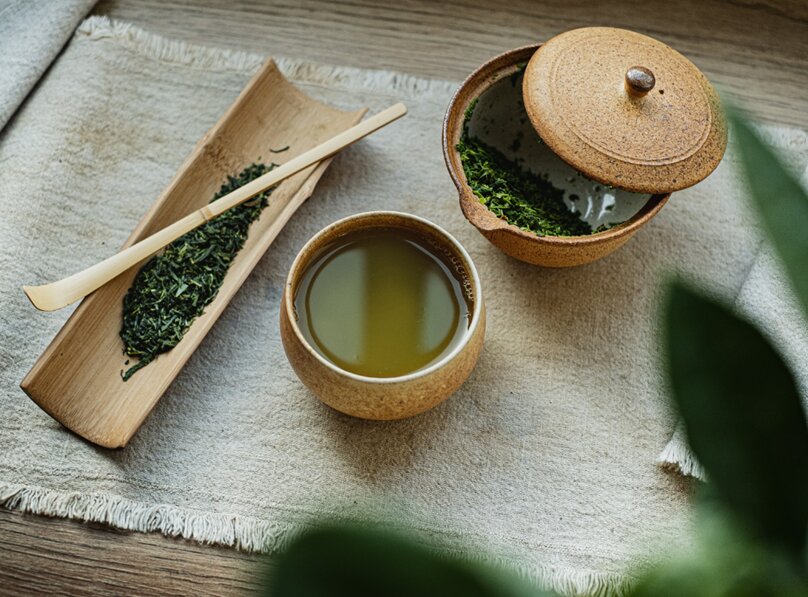
For some, drinking kratom tea feels smoother and more tolerable than raw powder ingestion. Others report digestive discomfort if it’s prepared or taken the wrong way. So, how can you brew a cup that supports your system without upsetting it? In this guide, we’ll walk through the relationship between kratom tea and digestion, common causes of stomach discomfort, and how to make a cup that’s easy on the gut.
Why Digestive Discomfort Happens with Kratom
This is one reason many beginners explore how to make kratom tea, which can be gentler on the stomach compared to raw powder. Not everyone experiences digestive issues with kratom, but for those who do, symptoms often include:
- Nausea
- Upset stomach
- Bloating or cramping
- Loss of appetite
These effects are typically dose-dependent and can result from:
- Taking kratom on an empty stomach
- Consuming too much at once
- Using raw powder without filtering
- Sensitivity to plant alkaloids or tannins
- Low hydration levels
Why Kratom Tea May Be Easier on the Stomach
Brewing kratom into tea provides a way to avoid some of the irritants found in raw powder. By steeping the plant matter and straining it, you’re essentially filtering out the fibers and reducing tannin concentration, which may lead to a gentler effect on digestion.
Key Benefits of Kratom Tea for Digestive Comfort:
- Reduces raw plant fiber intake
- May lower tannin content
- Can be sipped slowly to avoid overload
- Easier to combine with calming herbal blends
That said, how you brew the tea makes a difference. Using the wrong method—or consuming it too hot, too fast, or too strong can still lead to discomfort.
How to Brew a Stomach-Friendly Cup of Kratom Tea
Creating a gentle and effective cup of kratom tea involves more than just pouring hot water over powder. Here’s how to make a cup that’s easier on your digestive system while still maintaining the desired effects.
1. Use the Right Water Temperature
Avoid boiling kratom powder or leaf directly in water at high temperatures. Excessive heat can degrade alkaloids and create bitterness that’s harsh on the stomach.
- Ideal temp: 85–95°C (185–203°F)
- Let water cool slightly after boiling before pouring over kratom
2. Opt for Crushed Leaf or Filtered Powder
Crushed leaf kratom (as opposed to fine powder) works best for tea. If you only have powder, make sure to strain it thoroughly to avoid drinking the fiber.
- Use a tea infuser, muslin bag, or cheesecloth to separate solids
- Let the tea steep for 15–20 minutes for maximum alkaloid release
3. Add Soothing Digestive Ingredients
Some herbs can complement kratom and help settle the stomach:
- Ginger root – Supports digestion and reduces nausea
- Chamomile – Known for calming the gut and easing tension
- Fennel seed – May relieve bloating or cramps
- Peppermint – Refreshing and known to support digestive flow
You can steep these together with kratom or add them after straining.
4. Include a Fat Source (Optional)
Kratom’s alkaloids are fat-soluble, so adding a small amount of healthy fat may help absorption while also making the tea gentler.
- Try coconut oil, milk, or ghee
- Avoid overdoing it—just a teaspoon is enough
5. Sweeten Carefully (Or Not at All)
Artificial sweeteners or heavy sugars may irritate digestion. If you need to mask the flavor:
- Use a small amount of raw honey or stevia
- Add lemon juice to brighten flavor and support alkalinity
When and How to Drink It
For best digestive comfort, timing and portion matter just as much as preparation.
- Avoid taking kratom tea on a completely empty stomach
- Eat something light—like toast or fruit—15–30 minutes before
- Sip slowly over 15–30 minutes instead of chugging
- Start with a low serving size and adjust gradually
- Stay hydrated throughout the day with water or herbal teas
Kratom tea is best enjoyed as a mindful part of your routine, not rushed or overused.
What If You Still Feel Discomfort?
If you’re brewing correctly but still feel queasy or bloated, here are some simple adjustments to try:
- Lower the dose: Sometimes less really is more
- Switch strains: Some users find green or white strains easier on digestion than red
- Take a break: Using kratom daily can build tolerance or sensitivity
- Try capsules or extracts: These may reduce exposure to certain irritants if tea doesn’t work for you
Also, consider the possibility that kratom may not agree with your system long-term. If stomach issues persist, it's worth stepping back and re-evaluating your use.
Final Thoughts
Kratom tea can be a smooth and soothing alternative to raw powder but only when brewed and consumed with care. By using proper brewing methods, adding digestive-friendly herbs, and listening to your body’s signals, you can enjoy kratom tea without the upset. Not every method works for everyone, but a little adjustment goes a long way. Always purchase your kratom from brands that test their products, clearly label strain names and alkaloid content, and prioritize clean sourcing.
Website of Source: https://www.medicalnewstoday.com/
Source: Story.KISSPR.com
Release ID: 1516148
